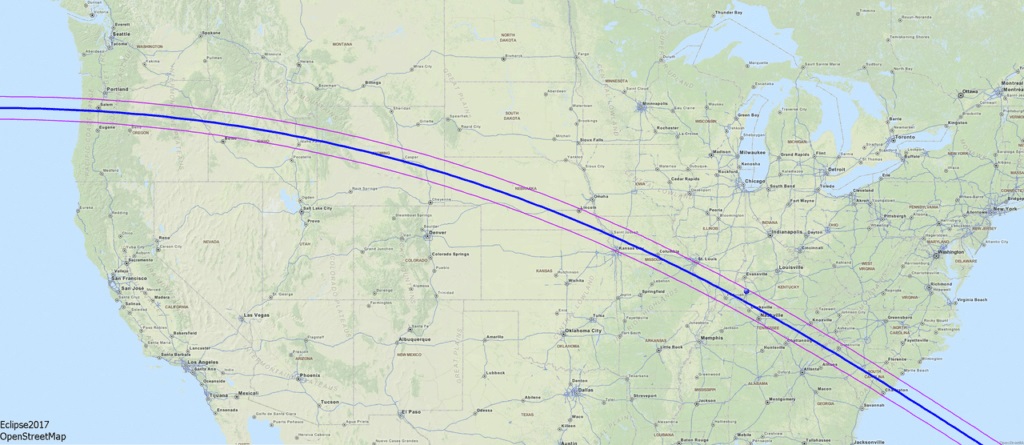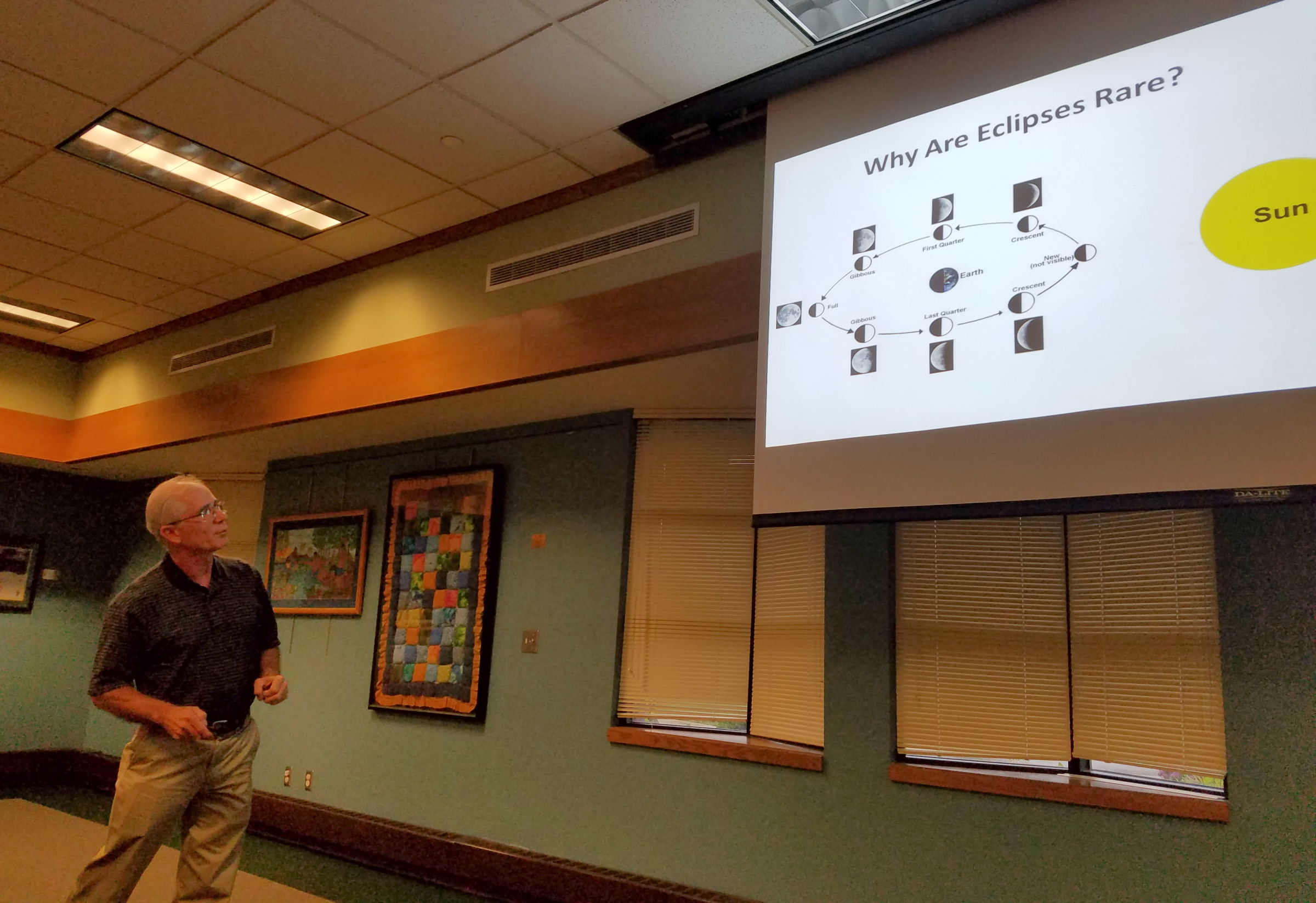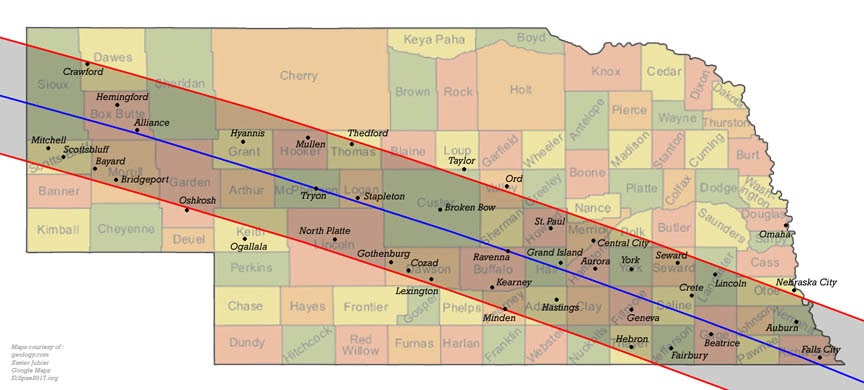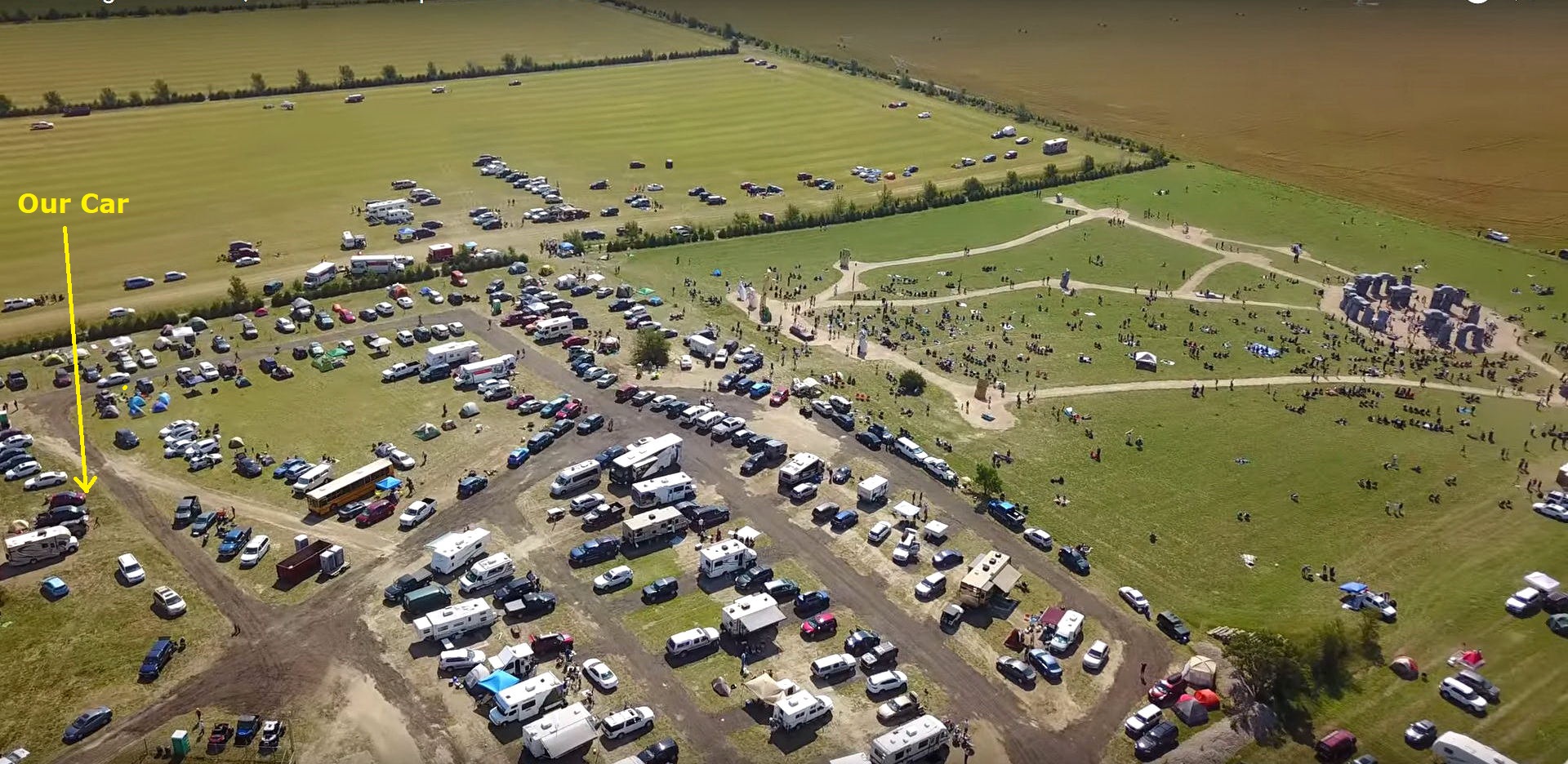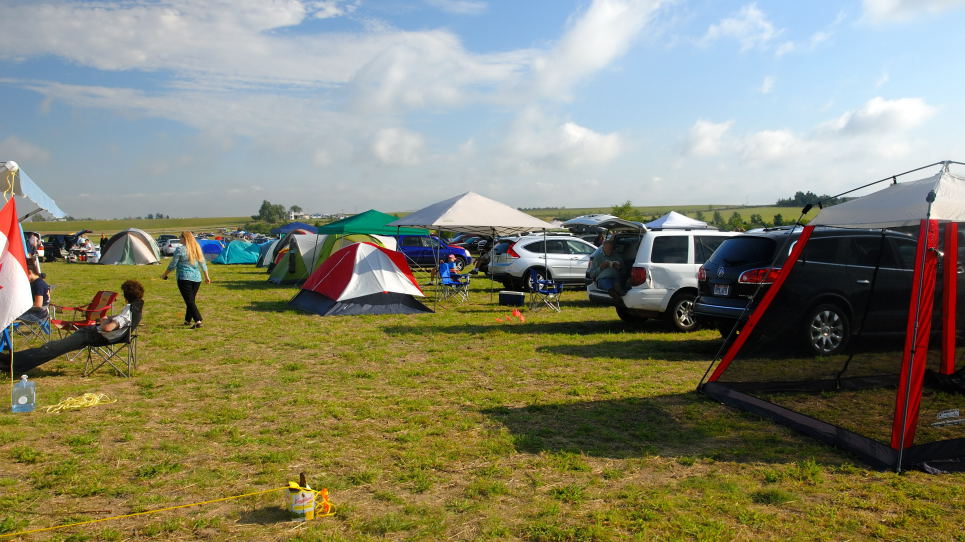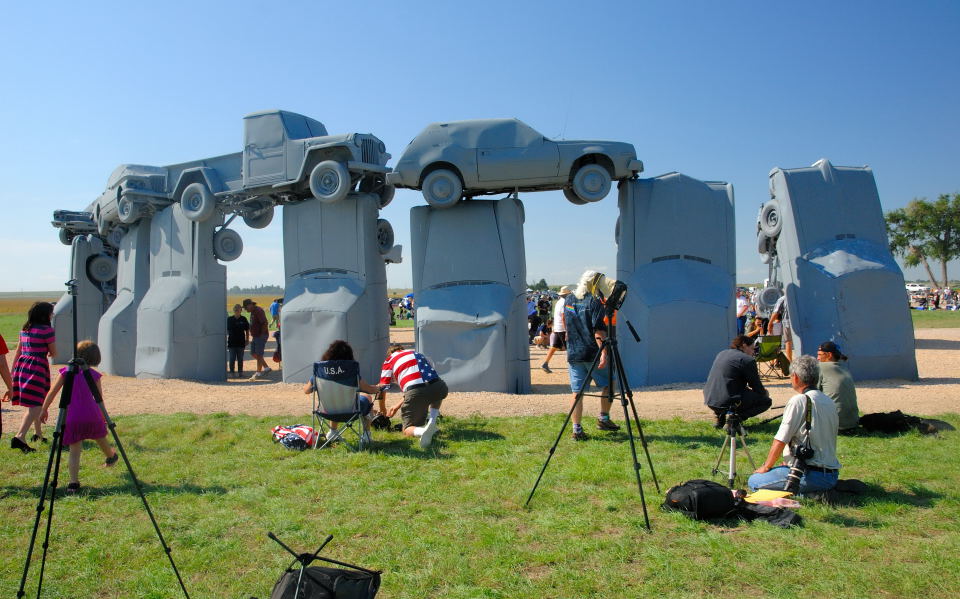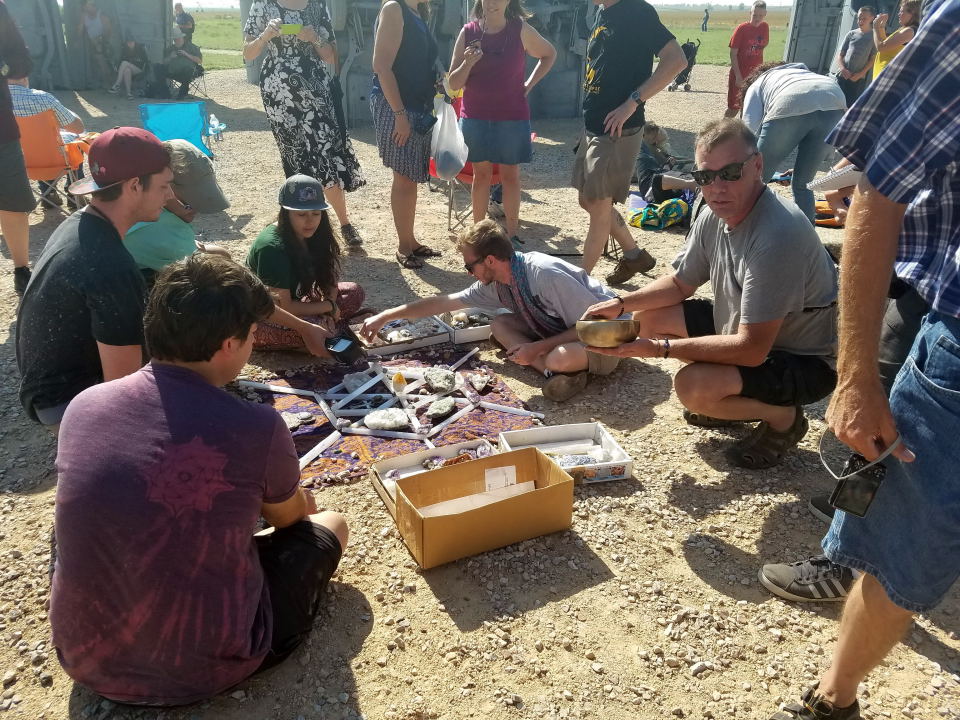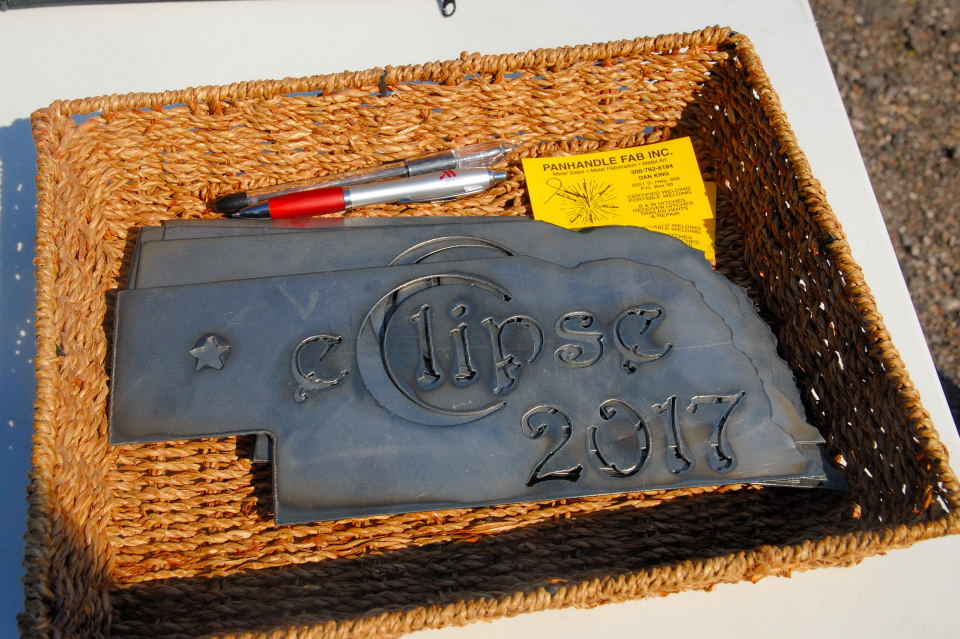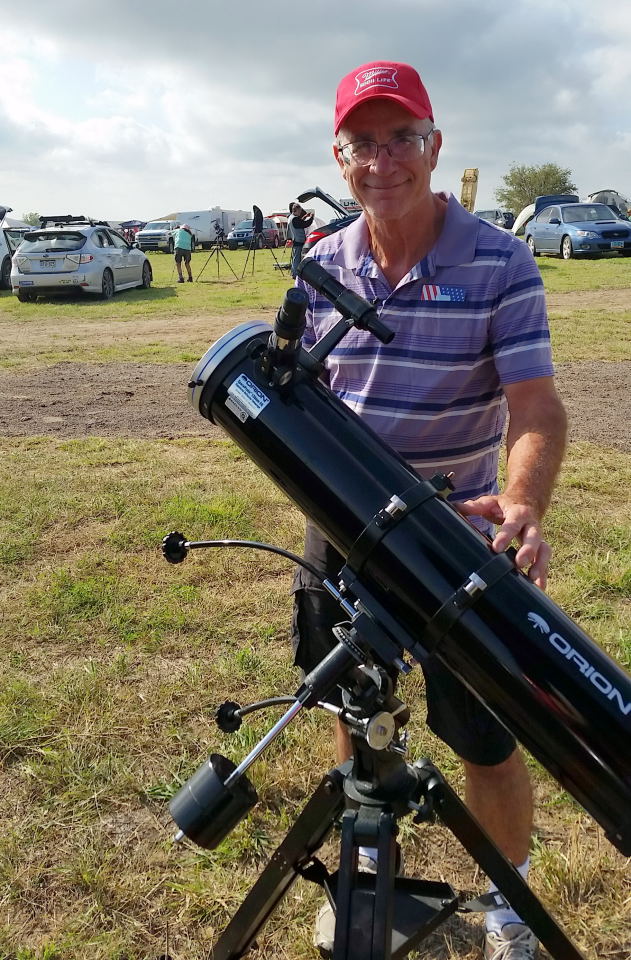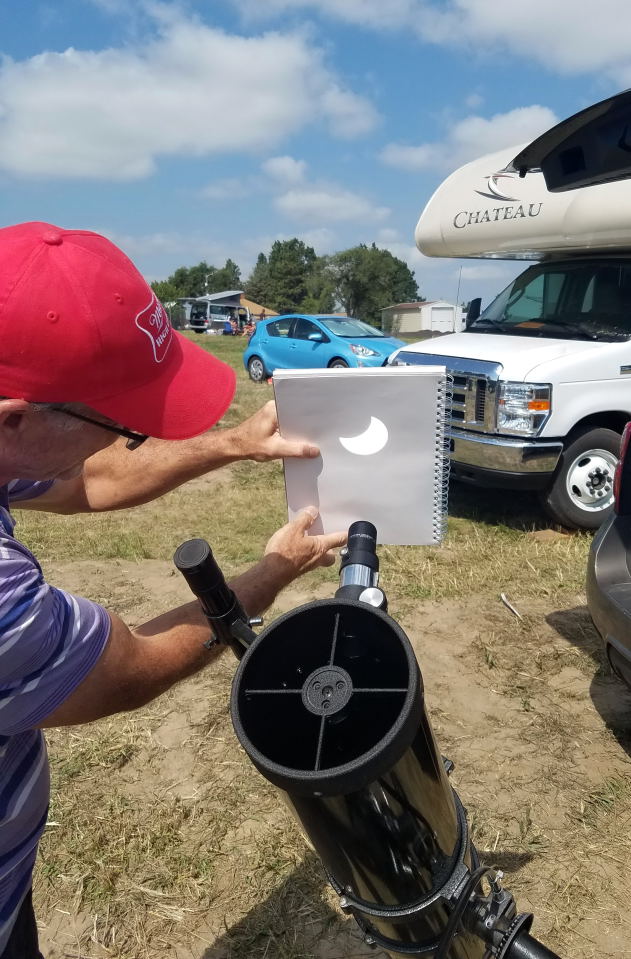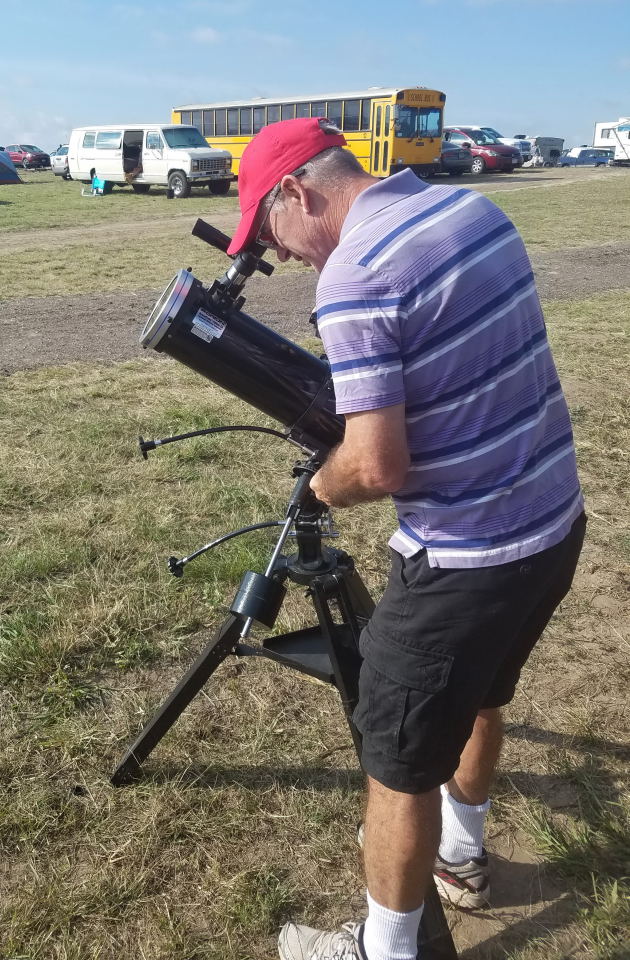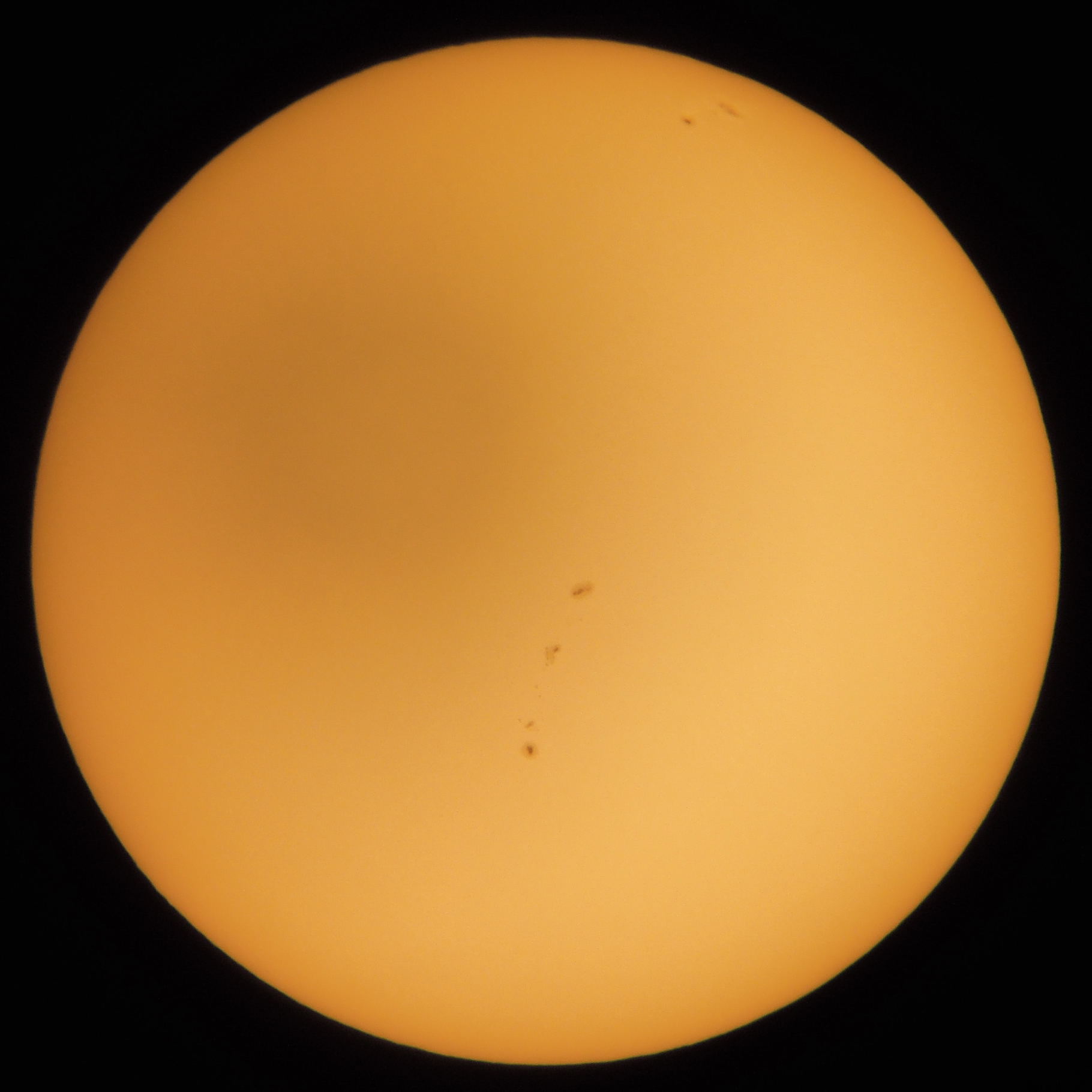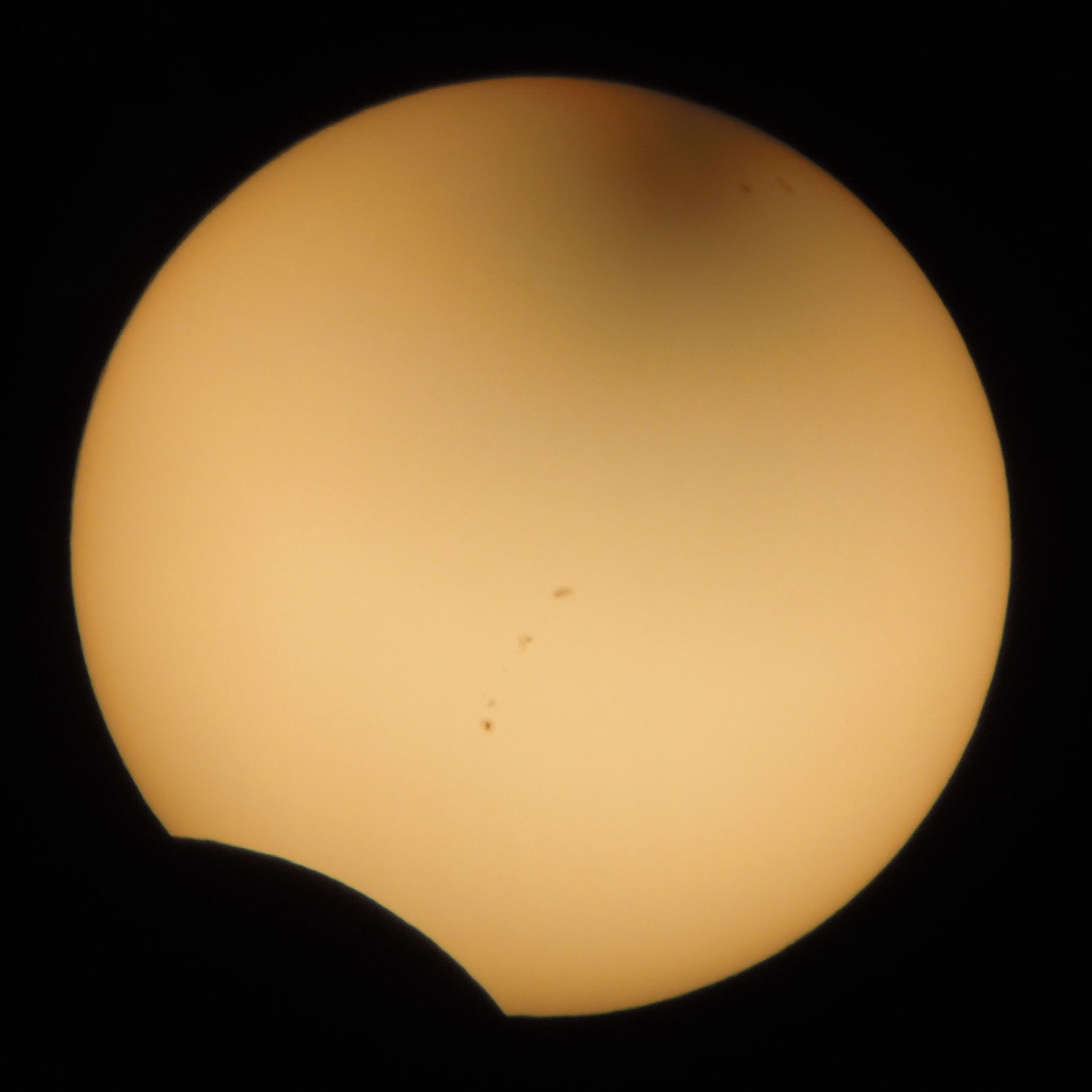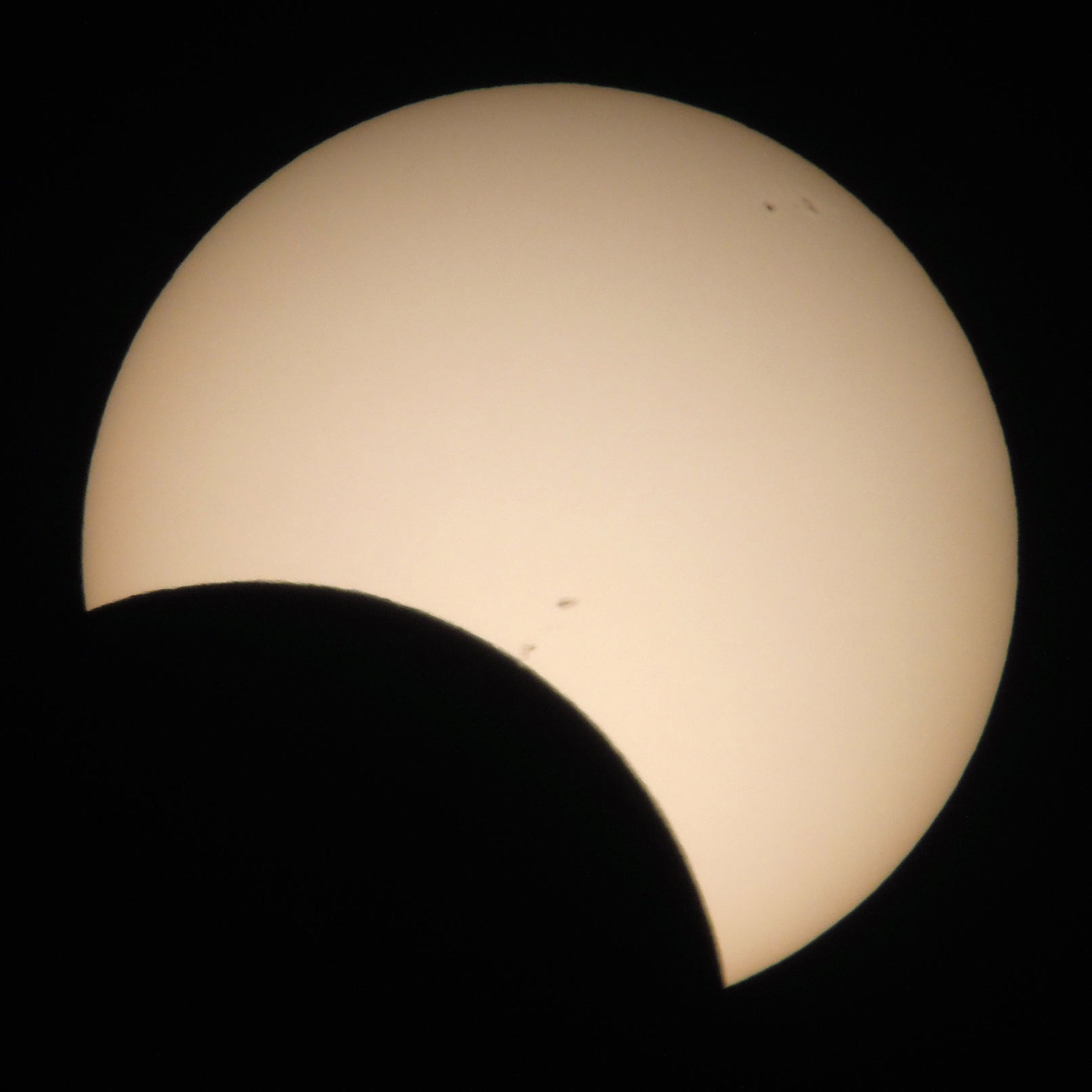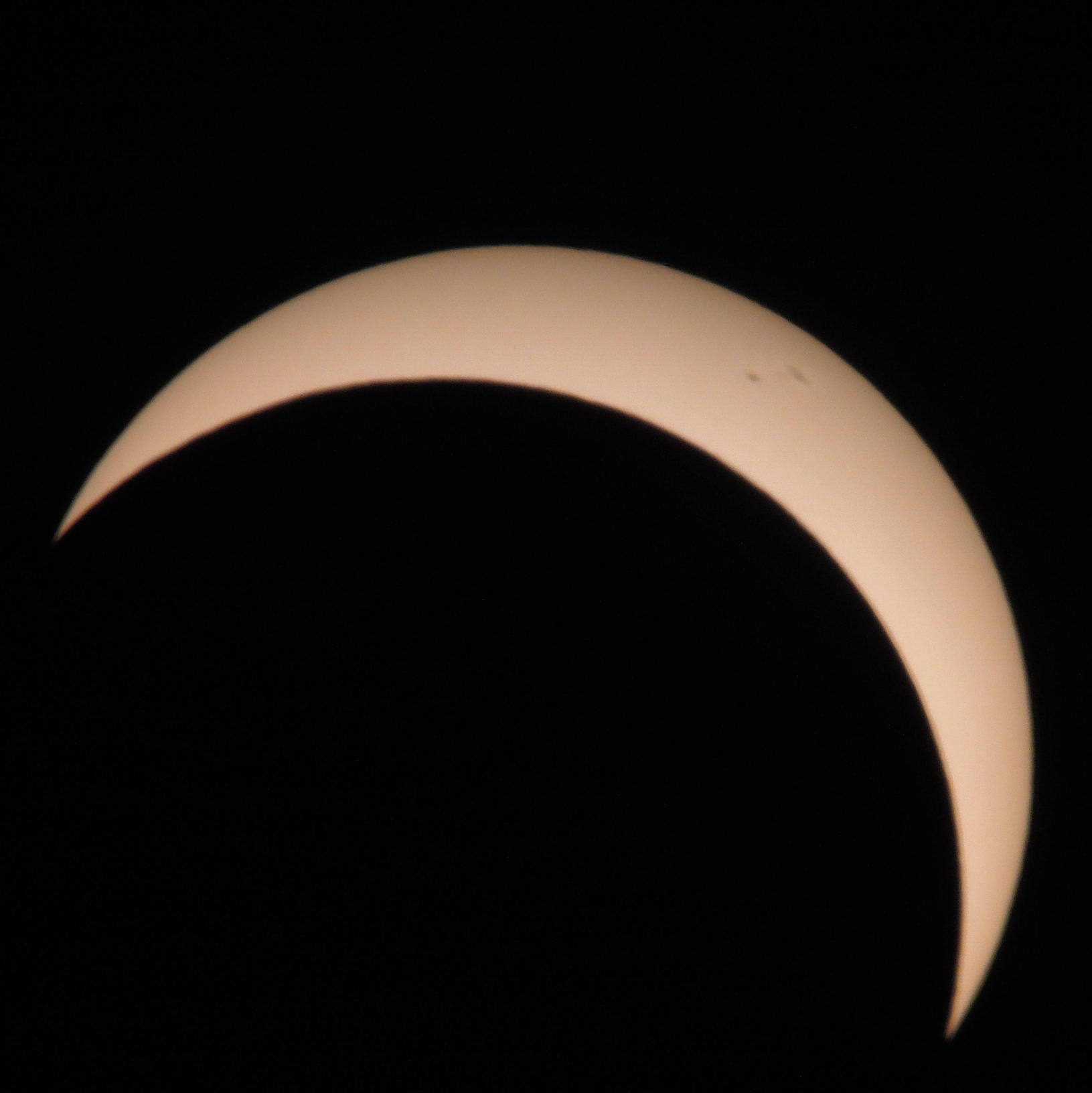My Thoughts On The 2017 Total Solar Eclipse
My first which I saw from Alliance, Nebraska, at the site of Carhenge.
The Overall
The total solar eclipse was simply spectacular and it defies any adequate description. It has to be experienced.
As an astronomy enthusiast as far back as I can remember, I had seen several partial solar eclipses, but never one that was total. And I knew everything that was going to happen. In fact, I gave several talks at libraries! So ahead of time, I knew what I was going to see step by step and it was absolutely going to be one of the most incredible experiences of my life. It is exactly the sort of expectation that inevitably leads to disappointment because it can't possibly live up to that kind of hype. But it lived up to the hype and then some.
I knew it was going to get darker, and we experience that all the time, but it wasn't the same because in the final minutes the sun's light shrinks to a pinpoint of light as seen by the naked eye. It looks like an incredibly bright star, what I'd imagine a supernova occurring in our galaxy would appear. The shadows on the ground become unfamiliar because they become very sharp. Eerie is the only term that comes to mind. Venus was already obvious in the sky. During this same time there is this ominous darkness in the sky which is the moons shadow coming at you at 1,800 MPH. As the sun shrinks to near nothing, the corona makes its appearance and you see the jaw dropping diamond ring effect. As the "diamond" fades away you see Baily's Beads, the last bit of the sun's rays passing through the valleys of the moon. And now for the next 2 and half minutes you savor the view of the sun's corona. At this point I removed the filter from my telescope to see the corona up close and it put to shame every image I've ever seen. And the beautiful prominences were there, and in superior resolution to the Ha filter images! In the sky there was Venus, Jupiter, Mercury, and Mars. It looked like twilight, but the glow was 360 degrees around us. It was information overload as I didn't know what I should look at next and I was frantic thinking there is only two and a half minutes of totality. Finally, with the total phase nearly complete, everything that I'd seen would be seen again, but in reverse order.
I think the reason that it always lives up to all the hype is that beyond the simple fact that the visual and personal experience is always better than a photo, there is this: I have seen a number of great astronomical sights in my life, but they are all basically singular events. The total solar eclipse is a whole series of events, and nearly all of them rise to the level of jaw dropping spectacular. In the case of this eclipse, all of it happening in about a six minute timeframe.
The Leadup
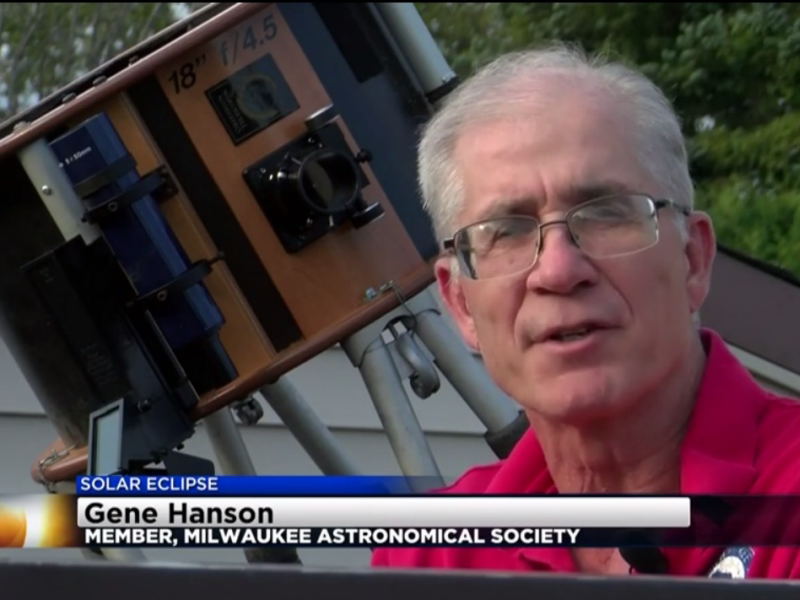 In my role as the Milwaukee Astronomical Society Observatory Director and now Webmaster, I get requests to give astronomy
talks from time to time, but they're rare. The attendance is never more than 25 and if I get more than 10 I think it was
worthwhile. But leading up to this total solar eclipse, I got 4 requests to talk about the event, and I had a small segment
on a local TV station. So I put together a 45 minute talk on what everyone can expect, but most important, why they must
be at or near the center line because a partial eclipse is really not all that special.
In my role as the Milwaukee Astronomical Society Observatory Director and now Webmaster, I get requests to give astronomy
talks from time to time, but they're rare. The attendance is never more than 25 and if I get more than 10 I think it was
worthwhile. But leading up to this total solar eclipse, I got 4 requests to talk about the event, and I had a small segment
on a local TV station. So I put together a 45 minute talk on what everyone can expect, but most important, why they must
be at or near the center line because a partial eclipse is really not all that special.
Having not actually experienced a total eclipse personally, I found myself backing off claims that this might well be one of the most memorable events of their lives. But I've heard from at least a dozen amateur astronomers that a total eclipse is by far the most exciting events they'd experienced. To hear it from many they'd compared it to a deeply religious experience, practically life changing. Life changing? This is a claim easily dismissed, but actually easily believable because several then went on to chase these events all over the world.
About Our Trip
Every year we make a drive out to our Arizona home in late October and return to Wisconsin in late April. Our trip to Arizona takes us through Iowa and then Nebraska winding up in Denver as Debbie's kids were living there at the time. Since the drive takes us very near Grand Island, NE which was near the center line, I thought it would be a good place to see the eclipse so we made hotel reservations there. It would have been better to go further west into Wyoming, but we were going to move from our house in Oconomowoc just 2 days after the eclipse. So the farther west you go, the farther east we would need for the return.
So our drive was familiar and it seemed like a great place to view the event. After checking in at the hotel, we found they had really embraced the eclipse and included everything in the photo above including a pair of eclipse glasses. We didn't need them because we brought along about 100 pairs of them given to the MAS by the Night Sky Network.
But the weather forecast was disconcerting. It looked like it might be overcast. I must have changed my mind a dozen times whether to stay in Grand Island or drive farther west where it looked more promising. At 4:00AM I decided we should try driving west. I didn't know how far we could go, but I chose a route away from the interstate as heavy traffic was predicted, and one that took us through Alliance, in the pan handle of Nebraska as that was on the center line. That would be a 4 and a half hour drive which seemed easy giving lots of spare time should we need to go further west.
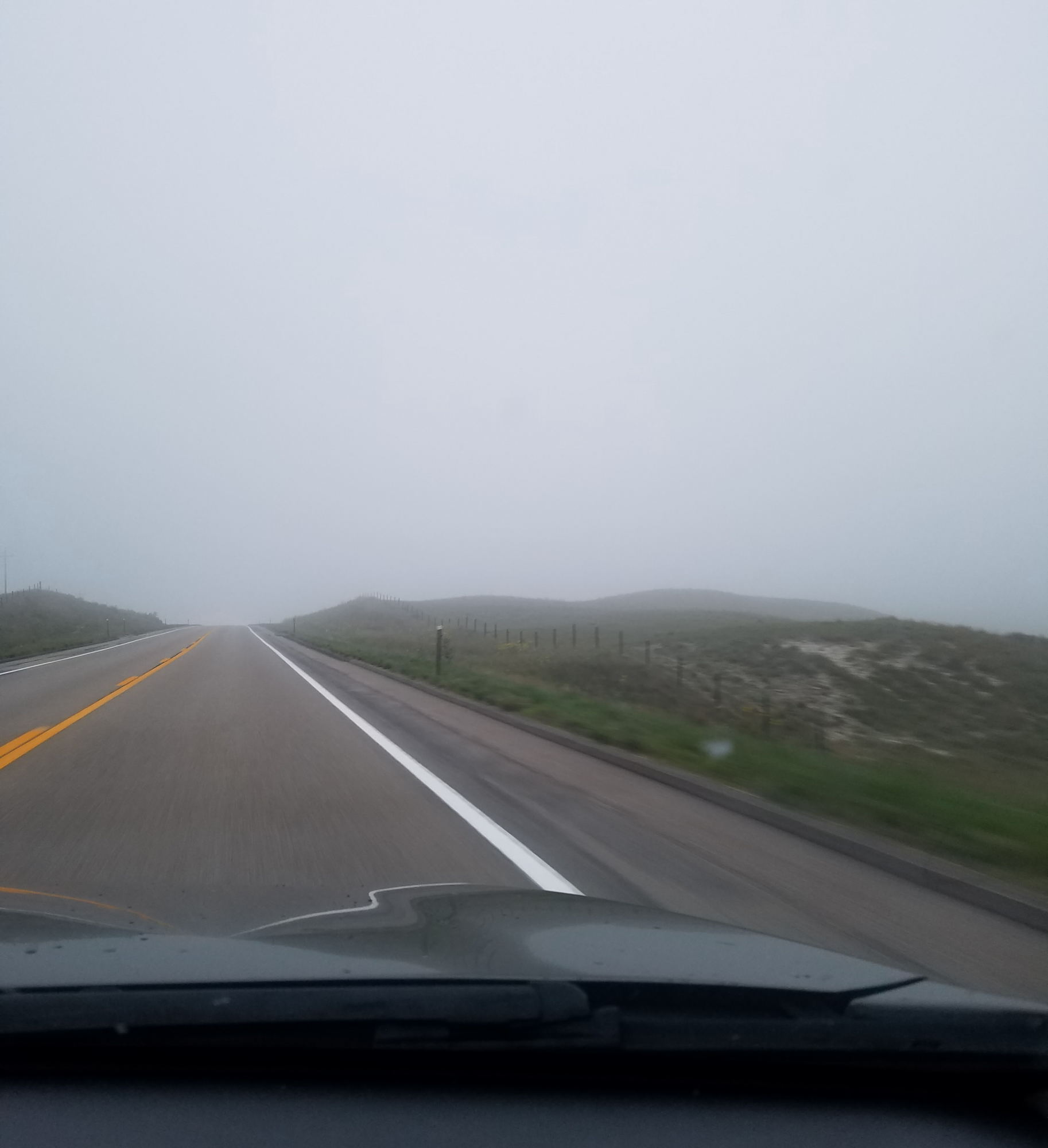 As we went out to the car for the long drive further west, it looked like it was the right decision as the sky seemed mostly
cloudy. However, an hour into the drive the sky completely disappeared as we were suddenly in fog which only got
denser the further we went. I don't know what Debbie was really thinking, but I was sure she was wondering if this was
worth it. But I knew it would be worth it, but if, and only if, we had clear enough weather. As the fog continued
with no let up my heart sunk and I just knew we were going to be thwarted. We had to drive considerably slower than the
speed limit so this was costing us time. I always knew clouds were a possibility, but fog? Never in my wildest imagination.
We had the radio on and sometime between 6 and 7am, a guy on the radio was talking about the fog and said this was very common
for this part of Nebraska during this time of year. But he had good news: it always burns off by 9:00AM and if it did, we'd
have the clearing needed to see the eclipse.
As we went out to the car for the long drive further west, it looked like it was the right decision as the sky seemed mostly
cloudy. However, an hour into the drive the sky completely disappeared as we were suddenly in fog which only got
denser the further we went. I don't know what Debbie was really thinking, but I was sure she was wondering if this was
worth it. But I knew it would be worth it, but if, and only if, we had clear enough weather. As the fog continued
with no let up my heart sunk and I just knew we were going to be thwarted. We had to drive considerably slower than the
speed limit so this was costing us time. I always knew clouds were a possibility, but fog? Never in my wildest imagination.
We had the radio on and sometime between 6 and 7am, a guy on the radio was talking about the fog and said this was very common
for this part of Nebraska during this time of year. But he had good news: it always burns off by 9:00AM and if it did, we'd
have the clearing needed to see the eclipse.
At about 8:00 in the morning maybe 30-45 minutes outside of Alliance, there was the wonderful sight of a clearing in the west. Getting closer to Alliance I saw plenty of places that would be great for eclipse viewing, but only saw two people having equipment set ups. We got to Alliance and still no one to be seen, but there did seem to be people at a place they called the rodeo grounds. We then pulled into a Cenex gas station / convenience store and Debbie asks the attendant, "Where is everyone seeing the eclipse?" They answered, "Most people are gathering at Carhenge." Debbie had no idea what that was about, but I did and seen pictures. Carhenge is a full-scale Stonehenge re-creation made out of old cars painted gray. But I didn't know where it was. It turns out it's right outside Alliance. We got directions which couldn't be simpler: it was just a few miles down the road.
Carhenge
As we got there I was thrilled as it was the kind of place I wanted to be: with a crowd of people all there to see the eclipse. The first parking area was $50, but that was to be right at the Carhenge monument of cars. I opted for the $20 lot which was only a short walk away. We had a little over an hour before the start of the eclipse and I set up up the small telescope I brought fitted with a proper solar filter for safe viewing of the sun. I also had a bunch of extra solar glasses to hand out if anyone was in need.
I got the telescope set up and then walked around the Carhenge Monument. The parking areas all looked like we were tail-gating at a baseball or football game. Though there were many telescopes with cameras, most of the people at their cars did not. As the partial phase had not started, we walked over to the Monument.
At the very middle of the monument, Debbie was fascinated by a small group of people with their crystals.
There were some people selling souvenirs, almost all of them not very interesting, but the one above immediately caught my eye. In the shape of Nebraska with a star indicating the location of Alliance. We bought it!
Sharing the Eclipse / A Unique Astronomy Outreach Opportunity
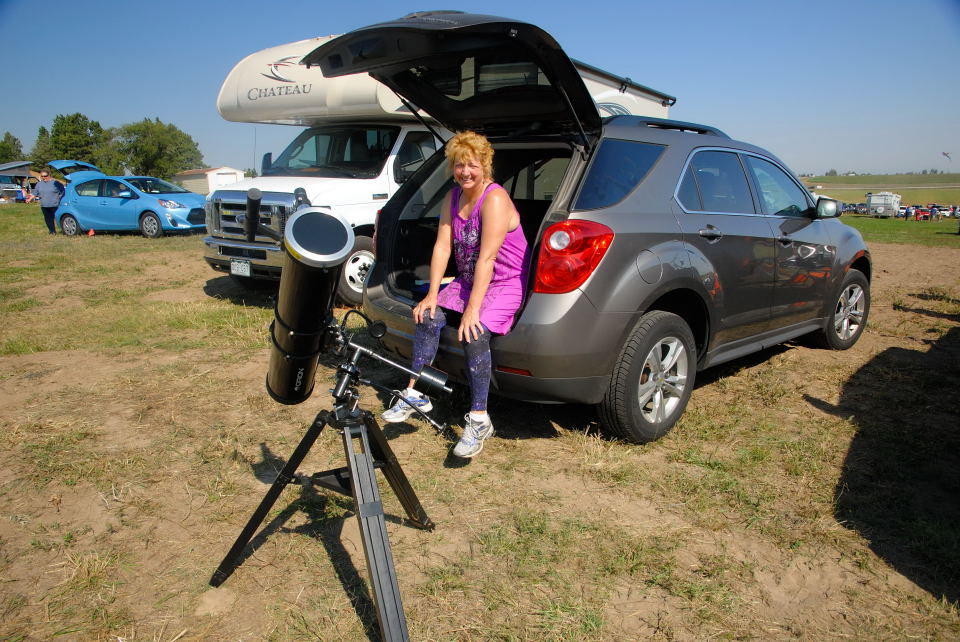 Not only did I want to view the sun before and during the partial phases (then removing the filter during totality),
but I figured the many passers by would want to take a look.
This was a very unique opportunity to do public outreach.
But after a half hour of seeing people just walk by, many
times briefly staring in the direction of that telescope, no one approached. I finally surmized that everyone was just
being too polite, respecting our privacy which I didn't need or want. So I started asking people if they glanced over,
"Have you seen the sun in a telescope?" The response was almost always positive and most were beaming at the opportunity.
For most everyone it was the very first time they'd seen the sun through a telescope. And I was delighted that there were a
number of good sunspots for everyone to see.
Not only did I want to view the sun before and during the partial phases (then removing the filter during totality),
but I figured the many passers by would want to take a look.
This was a very unique opportunity to do public outreach.
But after a half hour of seeing people just walk by, many
times briefly staring in the direction of that telescope, no one approached. I finally surmized that everyone was just
being too polite, respecting our privacy which I didn't need or want. So I started asking people if they glanced over,
"Have you seen the sun in a telescope?" The response was almost always positive and most were beaming at the opportunity.
For most everyone it was the very first time they'd seen the sun through a telescope. And I was delighted that there were a
number of good sunspots for everyone to see.
Later on, upon reflection, I understood the hesitation. Almost all the telescopes I saw were complex set ups because they were going to image and visitors would not be welcome because the scopes were not set up for visual observation. I was decidedly not doing anything but simple "cellphone" imaging (simply putting a camera up to the eyepiece) because I didn't want anything to get in the way of experiencing the eclipse. I knew plenty of very talented astrophotographers who would be taking pictures.
For the people who came to take a look, a number of them asked incredulously, "Is this safe?" Each time I had to restrain myself from saying something a little sarcastic like answering, "It's perfectly safe," while making like I was holding cane. Because it's obviously safe or I wouldn't be looking myself, but it's a very legitimate question because directly viewing the sun always comes with some degree of risk. And a few asked, "Aren't those just spots in the telescope?" My response to that one was simply to tap on the tube so they could see the spots jiggle with the sun. I even took off the filter to demonstrate the projection method. And in this era of cell phone cameras, many tried with varying success to take a picture.
Above are my attempts at doing "cellphone" imaging, but I was actually using a point-and-shoot camera which I found easier to aim.
The most memorable visitor was a teenage boy who came by and had a welder's helmet. That is a very safe way to view the sun as the filter is more than adequate, but my thought was it would be a pain wearing for any length of time. He was euphoric when I offered him a pair of eclipse glasses!
As the coverage of the sun reaches 90% it's noticably darker and it starts looking like you have sunglasses on. At around 95% I remembered that it should be getting noticably cooler, but I couldn't tell. I turned to ask Debbie if she thought it was getting colder, but I never got the words out. She was putting on a hooded sweat shirt! I couldn't feel it because I was simply too excited.
Now as it was getting darker with the sun just have a sliver of light, Venus made its appearance. The landscape was very surreal in the light remaining and it must look like what we'd see at night if a nearby star goes supernova. And then I got a surprise when we could hear roosters crowing from the farm just across the road. I never mentioned this in my talks because 1) the odds that a rooster would be nearby are practically nil, and 2) I read somewhere that roosters crowing at dawn was an urban myth.
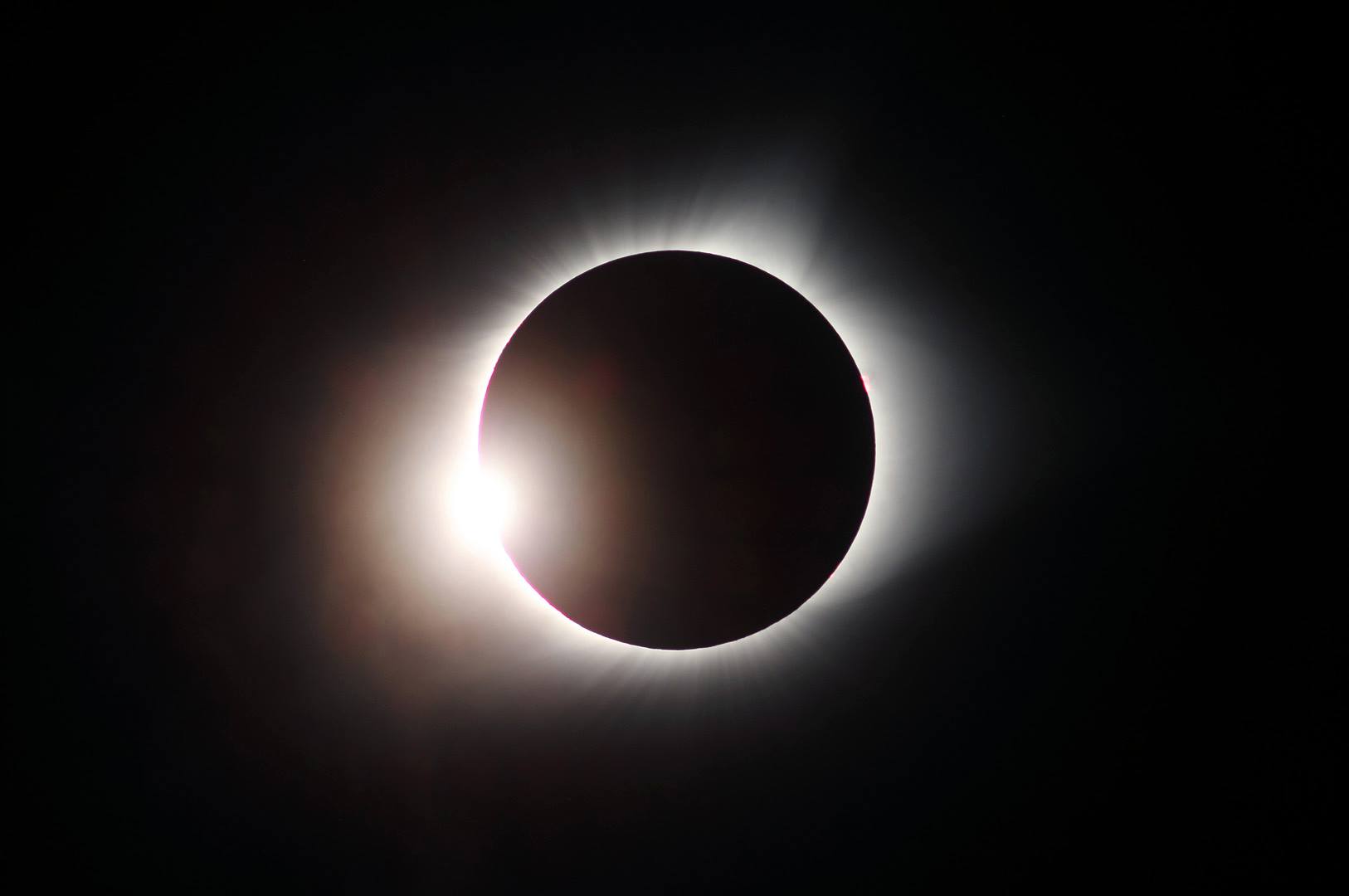 Diamond Ring Effect - Photo by John Asztalos
Diamond Ring Effect - Photo by John Asztalos
With only a sliver of sunlight remaining I could see the black omnious shadow of the moon getting larger as it was moving toward us at 1800MPH. And then what I was really waiting for: the beautiful diamond ring effect which in my mind starts the total solar eclipse and was accompanied by the cheers of the crowd. Debbie was in awe of the diamond ring and commented about it later. Next would be the appearance of Bailey's Beads, but I missed that (I would have to wait for the end of the eclipse to see them and then the sight of the sun's corona.
The 2 minute 30 second clock was running and I was more than a bit frantic as there was so little time. I got the filter off the telescope and viewed the sun's corona and the sight put to shame the countless pictures I've seen of it. The corona appeared alive as it didn't appear static. But it was also disconcerting to be looking without the filter. That just seemed so wrong to me! I told Debbie she had to see this in the scope. As I looked around I was surprised it really wasn't all that dark. It looked like twilight, but the glow was from every direction. Venus was conspicuous and I could also see Regulus.
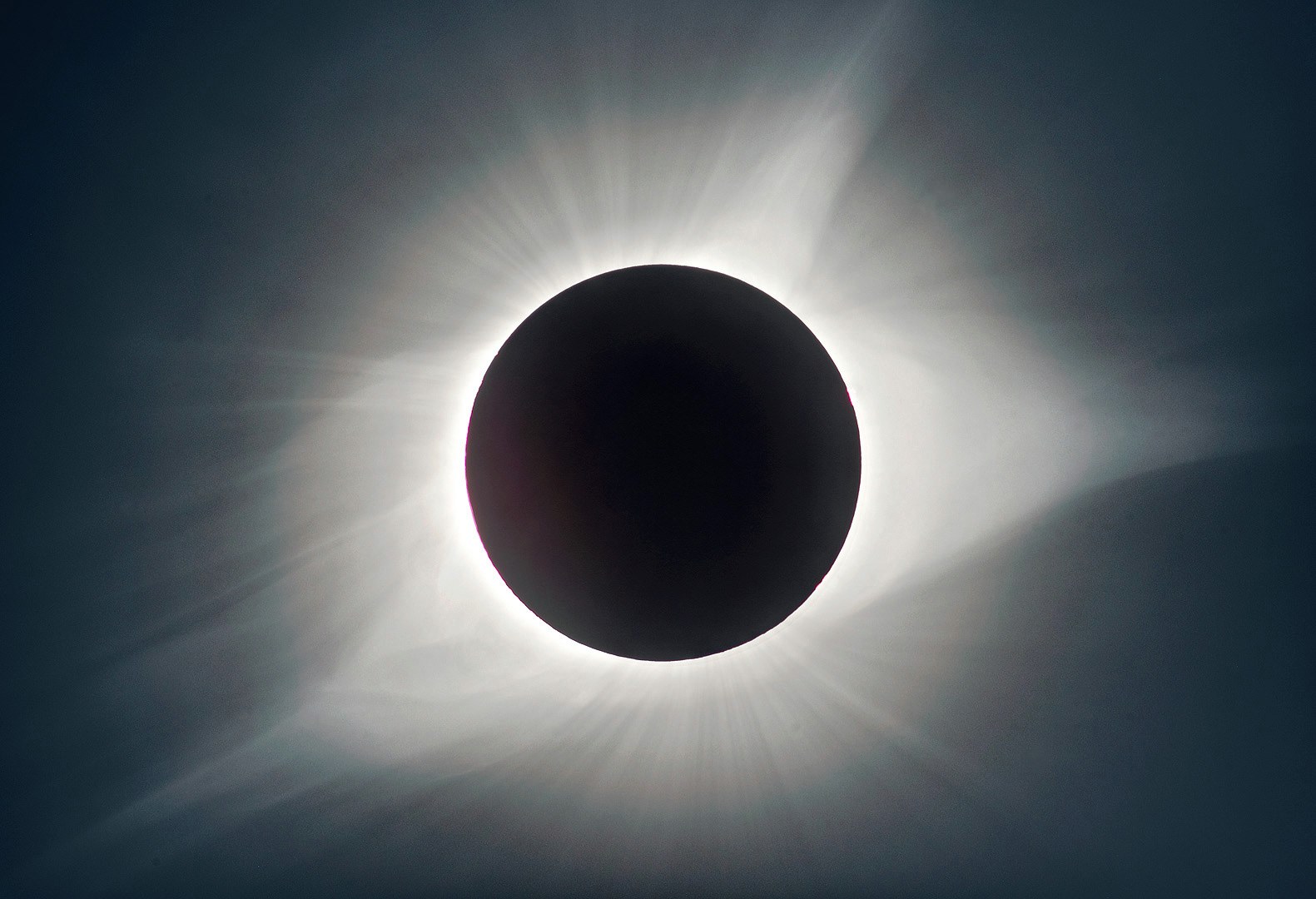 The Sun's Coronoa - Photo by John Asztalos
The Sun's Coronoa - Photo by John Asztalos
When I got back to looking at the sun there was probably less than a minute to go. The view was now different because I could see a beautiful show of prominences. In any total eclipse you're bound to see some prominences, but there was one spectacular one that I later heard many were calling "The Dragon" because of its appearance. Again, the view was better than any picture and superior to the Ha filter images. It was so emotional as I knew I was seeing something so spectacular and I only had very little time remaining.
 Prominences featuring "The Dragon" - Photo by John Asztalos
Prominences featuring "The Dragon" - Photo by John Asztalos
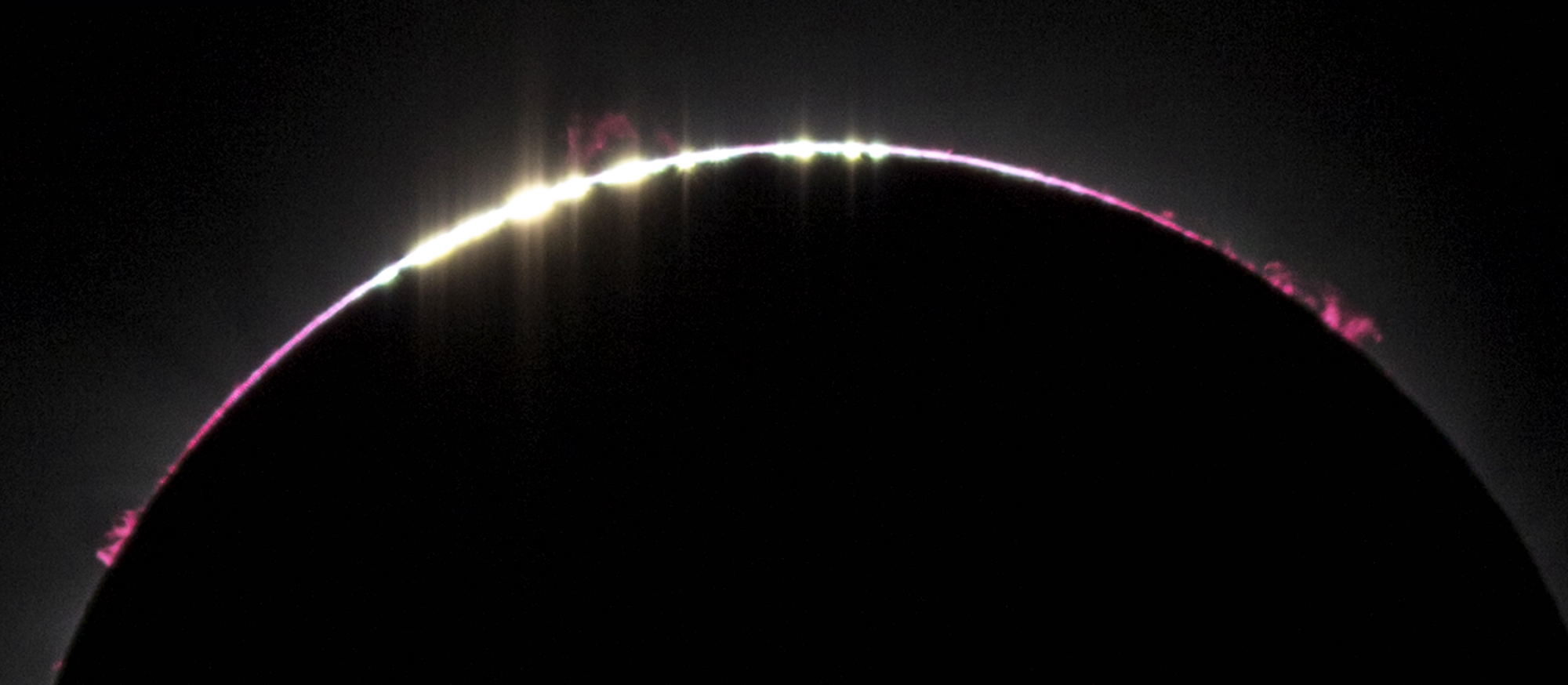 Bailey's Beads - Photo by Nolan Zadra
Bailey's Beads - Photo by Nolan Zadra
As the moments went by I switched between being euphoric about the view and then concerned that it would be ending all too soon. I was also worried that I might get blinded when the sun suddenly returned. But I knew that heads up I'd get were the appearance of Bailey's Beads which I viewed for only a few seconds and then looked up in the sky to see the diamond ring effect and which signaled the end of the total eclipse. There were loud cheers and applause from the crowd.
I really wished we could have stayed there until the end of the eclipse, but 5 minutes after the total phase we needed to get out of there as quickly as possible to avoid the inevitable traffic jam. We were going to be moving from our house in Oconomowoc first thing Wednesday morning. I decided the best route was going north to get to I-90. We got to see a bit of the Badlands and stopped at the 1880 Town which was used in the Kevin Costner film, Dances With Wolves, because Debbie is a big Costner fan! We stayed outside of Sioux Falls for the night and then we drove back to Oconomowoc.
Epilog
After we drove away from Carhenge and heading to South Dakota I had time to reflect on the eclipse experience and it hit me why this event is so special, even with unbelievably high expectations it always delivers. This was especially puzzling to me because nothing was really a surprise. I knew what I was going to see and when I was going to see it, and did take into account that actually seeing it with my own eyes was going to be better than any picture or description.
I think the reason that it always lives up to all the hype is that beyond the simple fact that the visual and personal experience is always better than a photo, there is this: I have seen a number of great astronomical sights in my life, but they are all basically singular events. The total solar eclipse is a whole series of events, and nearly all of them rise to the level of jaw dropping spectacular. In the case of this eclipse, almost all of it happening in about a six minute timeframe.
Finally, there's the anticipation and inevitably most will have anxiety because you're at the mercy of the weather. Over the years I've heard enumerable accounts from my fellow astronomers of it clearing up only at the last moment.
Though it should go without saying, I'll be seeing the next total solar eclipse in the United States in 2024. My location will be somewhere along the red line which marks the centerline of the eclipse. My plan is to be somewhere in Texas.

